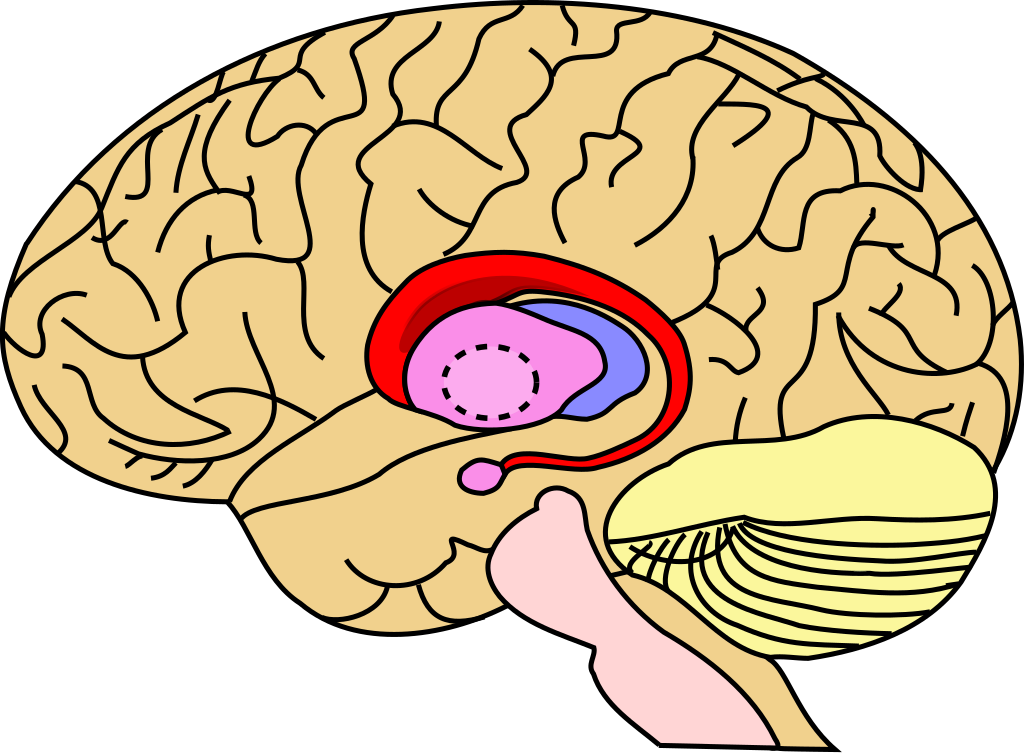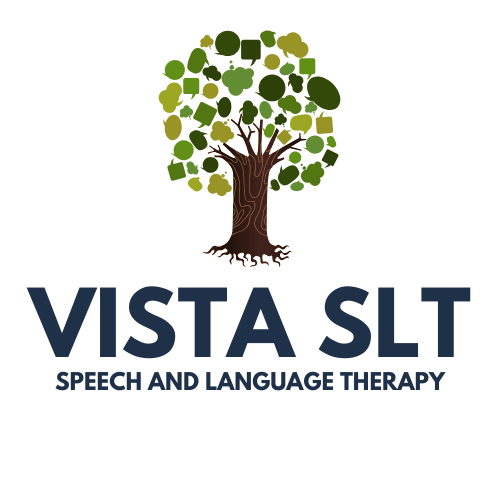Click here to translate this post
Bilingualism, the process of understanding and/or using more than one language, is complex and often misunderstood. Bilingualism does not cause or contribute to speech, language, or communication disorders. Evidence suggests that speaking additional languages can offer numerous cognitive and social benefits. In this blog, we will explore how bilingualism affects speech and language development in children and what the consequences of bilingualism could be in the event of brain injury/stroke.
Understanding Bilingual Language Use
In the UK, around 20% of children speak or understand more than one language. These children may be labelled “bilingual” or as having “English as an additional language.”

The CAUDATE is a brain region in the middle of the brain. It helps bilingual people switch between languages but it also keeps both languages separate. Experienced bilingual people use the caudate so much that it changes its size.
Firstly, how do children learn multiple languages?
Children have an innate ability to learn a language by interacting with their family and wider community. Language acquisition typically follows a process, starting with babbling, which evolves into single words, followed by two-words combined and then developing into sentences.
Although some children acquire two languages simultaneously from birth, others acquire the second language later on.
For bilingual children, there are a series of language processes which can often be misinterpreted as signs of language delay. These include:
- Code switching: switching between two languages and sometimes even mixing them in a sentence. Some bilingual adults also do this. One of our adult clients joked that the children in their household spoke ‘Ponglish’, a hybrid of Polish and English!
- Language interference: favouring one language over another, even if this differs from the language used in conversation
- Language attrition: the process of losing competence in use of a language over time. For example, a child who is exposed to English consistently at school may become less fluent in their home language. Keep using your home language with your child as reducing the child’s exposure will reduce their competence further.
Bilingual children may have stronger skills in one language than another and it is common for them to use different languages in different situations. For example, they may speak one language in school and another at home. Research has found that there is much more variation in the rate of speech acquisition in bilingual children than those who only speak one language. If the make-up of a child’s languages is similar, it may accelerate their ability to learn speech sounds which feature in both/all their languages. Being bilingual can also help some children to learn literacy skills sooner.
Some bilingual children stop talking while learning a second language. The silent phase can last 6 months to a year even in the absence of additional difficulties. It is important to monitor this stage closely and seek advice if concerned.
All of these processes are normal parts of bilingualism for both children and adults. Where concerns arise about a bilingual child’s language development, thorough Speech and Language Therapy assessment in all of the child’s languages is crucial to avoid misdiagnosis.
Common myths about bilingualism
Many parents worry that their child will get confused or develop Speech and Language difficulty if they hear two or more languages at home. This is not the case. Approximately 50% of the world’s population speak more than two languages. Studies have shown that babies only hours old are able to differentiate between sounds from their native language and a foreign language. A 2013 study (Moon, Lagercrantz and Kuhl) even suggests that babies begin learning language from their mother while still in the womb.
Another common concern regarding bilingualism in childhood is that hearing more than one language at home might negatively affect a child’s performance at school. In reality, many bilingual children have been found to do better academically than children who hear and speak only one language. Being exposed to multiple languages from a young age increases the brain’s flexibility. Bilingual children and adults are typically better at planning and completing tasks and remembering information as a result of exercising their brain by switching between two or more languages, remembering words and applying different grammatical rules.
For bilingual children, knowing their home language well is vital in helping them to build self-confidence and form relationships. It also develops their cultural understanding and sense of self. This has long lasting effects including success in education and improved job prospects.
Bilingualism and children with speech, language and communication needs
Some bilingual children will have speech and language challenges, just as children who speak only one language do. A bilingual child will likely have difficulty in both or all of their languages, not just in English.
Speech and Language Therapists should strive to provide assessment and therapy in all the child’s main languages, trying not to focus solely on treatment in English as the most prominent language in British society. If your bilingual child is experiencing speech and language difficulty, it is important to carry on speaking to them in their first language so that they continue to feel connected to you and their culture. If you are not fluent in English, it is preferable to speak to your child in your first language, so they are exposed a wide range of vocabulary and grammar.
What can I do to help my bilingual child develop their speech and language skills?
- Talk to your child in your/their home language. The more they hear this, the easy they will learn and use it. Encourage other family members to speak to your child in your/their home language to increase their exposure.
- Sing songs and share stories with your child in your/their home language. Games, television programmes and books may also be useful. Be proud of your home language. As your child grows, let them know the benefits of bilingualism to their learning and development.
- If it is natural for you to switch between languages within a sentence or from one sentence to the next, do not stop this. Code switching will not confuse your child.
- Arrange to meet with other children and families who speak your first and second languages. The more your child needs to use their languages, the more they’ll feel like speaking that language has a ‘purpose’ and be interested in learning it.
Supporting bilingual children with speech and language delay
The following tips may be useful for your bilingual child if you are concerned they are experiencing delayed language development:
- Use your child’s name to gain their attention
- Simplify your language and keep sentences short and to the point
- Use the 10 second rule to allow your child additional time to process what you have said and respond
- Use visual aids to support your child’s understanding
- Model speech back to your child and expand on what they have said. For example, if your child says ‘go car’, model ‘let’s go in the car’ or ‘there’s the blue car’.
- Seek assessment from a Speech and Language Therapist to guide you further. Make sure the Therapist knows the correct language and dialect you speak at home to support you appropriately. VISTA SLT can support assessment and therapy in the following languages: Punjabi, Gujarati, Urdu and English
Speech and language recovery and bilingualism
We have explored that there are differences in how bilingual children learn languages. But what happens if you are bilingual and develop language difficulties after a neurological event such as stroke or a brain injury?
There are a small number of research studies which have explored the link between severity of cognitive and communication difficulties following stroke or brain injury and bilingualism. Two studies (Paplikar et al, 2019 and Ardila et al 2021) found that Aphasia severity was significantly increased in people speaking only one language compared to those who are bilingual. This study, and others (Dekhtyar et al 2020), also found that cognitive difficulties were less severe in bilingual speakers. Bilingual speakers are at equal risk of developing aphasia after stroke as those who only speak one language.
A study from 2020 (Lahiri et al) found that bilingual speakers had a higher probability of recovering their language skills after stroke or brain injury. Improvements were seen regardless of gender, but a better recovery was noted in male bilingual speakers. While we can see improvements by providing Speech and Language Therapy in the person’s additional language, further research is needed around this. Speech and Language Therapists should consider factors like the person’s usual spoken languages at home and their preference when planning treatments (Faroqi-Shah et al 2010).
For bilingual speakers who were perhaps less fluent or less regularly exposed to their additional languages prior to their stroke or brain injury, avoiding use of the additional language might actually increase the degree of communication difficulty they experience (Calabria et al 2019).
How does this information apply to my bilingual loved one?
While research is still developing around bilingualism and Aphasia, the studies currently available highlight that being bilingual often lessens the severity of Aphasia and cognitive impairment after stroke or brain injury. In addition to this, it has been determined that learning an additional language may also delay the onset of Dementia by several years (Alladi et al 2017). Considering all of this, being bilingual is a huge asset.
We recommend that you seek out a Speech and Language Therapist who is able to provide assessment and therapy in your loved one’s primary languages. You should also provide the Therapist with information about how often each language is used at home and in other social settings. This will help them to determine whether it is most appropriate to work with your loved one in their first or additional language.
Contact us for further information and support.
Useful resources
https://early-education.org.uk/multilingualism-and-early-language-development
https://www.shropscommunityhealth.nhs.uk/chslt-bilingualism
References
Alladi, S., Bak, T.H., Shailaja, M., Gollahalli, D., Rajan, A., Surampudi, B., Hornberger, M., Duggirala, V., Chaudhuri, J.R. and Kaul, S. (2017) Bilingualism delays the onset of behavioral but not aphasic forms of frontotemporal dementia, Neuropsychologia, 99, 207-212, https://doi.org/10.1016/j.neuropsychologia.2017.03.021
Ardila, A., Lahiri, D., & Mukherjee, A. (2021). Bilingualism as a protective factor in aphasia. Applied Neuropsychology: Adult, 30(5), 512–520. https://doi.org/10.1080/23279095.2021.1960837
Calabria M., Grunden N., Serra M., García-Sánchez C., Costa A. (2019) Semantic Processing in Bilingual Aphasia: Evidence of Language Dependency, Frontiers in Human Neuroscience, 13. https://www.frontiersin.org/journals/human-neuroscience/articles/10.3389/fnhum.2019.00205
Dekhtyar, M., Kiran, S. and Gray T. (2020) Is bilingualism protective for adults with aphasia?, Neuropsychologia, 139. https://doi.org/10.1016/j.neuropsychologia.2020.107355
Faroqi-Shah, Y., Frymark, T., Mullen, R. and Wang, B. (2010) Effect of treatment for bilingual individuals with aphasia: A systematic review of the evidence, Journal of Neurolinguistics, 23 (4) 319-341, https://doi.org/10.1016/j.jneuroling.2010.01.002
Hambly, H., Wren, Y., McLeod, S. and Roulstone, S. (2013), The influence of bilingualism on speech production: A systematic review. International Journal of Language & Communication Disorders, 48: 1-24. https://doi.org/10.1111/j.1460-6984.2012.00178.x
Moon, C., Lagercrantz, H. and Kuhl, P.K. (2013), Language experienced in utero affects vowel perception after birth: a two-country study. Acta Paediatr, 102: 156-160. https://doi.org/10.1111/apa.12098
Paplikar, A., Mekala, S., Bak, T. H., Dharamkar, S., Alladi, S., & Kaul, S. (2018). Bilingualism and the severity of poststroke aphasia. Aphasiology, 33(1), 58–72. https://doi.org/10.1080/02687038.2017.1423272
Royal College of Speech and Language Therapists (RCSLT) (2024): https://www.rcslt.org/speech-and-language-therapy/clinical-information/bilingualism/
Wren, Y., Hambly, H., & Roulstone, S. (2013). A review of the impact of bilingualism on the development of phonemic awareness skills in children with typical speech development. Child Language Teaching and Therapy, 29(1), 11-25. https://doi.org/10.1177/0265659012464880

Leave a Reply
You must be logged in to post a comment.